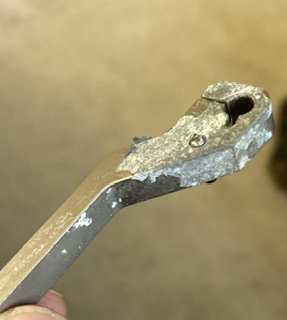- Joined
- Jun 26, 2018
- Messages
- 1,733
Hey guys & girls, I am replicating some parts and the current ones, I’m quite sure, are a TYPE of aluminum….but no idea what.
I would normally say cast, as they are very crystallized inside, but theses are oxidizing badly to where they peel. Also, if the were cast, they would be machined as they are very precision, but these most obviously are not machined (at least not on the external surfaces. I have read about a lot of odd aluminum types, but that’s not really help g me here. Ideas?
Another point, they are light like 6061, but much harder. You couldn’t run a nail along these and scratch them.
I would normally say cast, as they are very crystallized inside, but theses are oxidizing badly to where they peel. Also, if the were cast, they would be machined as they are very precision, but these most obviously are not machined (at least not on the external surfaces. I have read about a lot of odd aluminum types, but that’s not really help g me here. Ideas?
Another point, they are light like 6061, but much harder. You couldn’t run a nail along these and scratch them.


